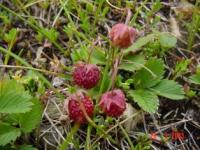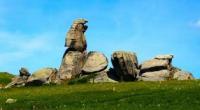You are here
Soils in West Altai Reserve.



Adventure tour in West Altai Reserve.
“Nature is wise. You can learn everywhere and from everything”
Leonardo da Vinci.
Bird-watching in West Altai Reserve.
Established in 1991 to protect the important ecosystem of the mountains and Altai forests, the West Altai State Nature Reserve is the largest nature reserve in Kazakhstan. Home to many types of mammals and plants on the IUCN Red List, it is well known for its successful conservation of the threatened Altai weasel.
In the North there are many geological formations, which are genuine monuments of nature, closely linked with people’s culture and history. Located in the northern corner of Kazakhstan right on the border with Russia, this nature reserve has a territory of more than 200,000 acres and is stretching along three climatic zones – taiga coniferous forests, alpine meadows and high-mountain tundra.
The reserve is sufficiently remote from the settlements, and as a result the nature here is preserved in its original form. The West Altai is home to more than 200 forms of fungi as well as about 900 key species such as the Siberian cow parsnip, angelica, peony, larkspur, wolfsbane and dandelion.
At the same time the reserve is home to about 52 species of mammals, such as fox, bear, glutton, sable, weasel, ermine, Siberian weasel, otter, musk-deer, maral, roe, elk, squirrel, chipmunk, common dark and red field-vole.
While it is almost free to visit the West Altai – about 160 Kazakhstani tenge, or less than a dollar – there are three tourist routes that are designed to provide guests with an all-around image. Most of its territory is closed off from visitors, and they can see the famous ‘Stone Fairy Tale’ only from afar.
Stretching for almost 12 kilometers, this valley is strewn with thousands of granite remains – bizarre-shaped giant pillars that appeared as a result of an ancient volcanic activity.
In a soil cover of the territory of the West Altai reserve the main types of soils, light gray forest soils, characteristic of average mountains and high mountains, mountain forest sour soils, mountain meadow Alpine soils, and also fragments of meadow and marsh soils are presented (Sokolov, 1977).
Mountain forest gray soils are formed in the conditions of a low mountainous terrain on equal watersheds and slopes, and also alluvial loops, under a canopy of the fir and aspen and fir woods. Mountain forest sour soils are widespread on slopes of a northern exposition, on alluvial deposits of granite and develop under the fir, cedar and deciduous woods.
Mountain meadow) soils of West Altai Nature Reserve are formed in a forest zone under different herbs cereal communities of glades, and also in a northern exposition. Besides, they meet on steep slopes east directions southern, western less often.
Mountain forest chernozemic soil are formed under grassy types of birch, aspen plantings. Mountain meadow Alpine soils are formed under the Alpine meadows and the tundra. They differ in existence of well developed horizon of the largest power (to 30 - 50 cm).
Inundated or alluvial soils are formed within the inundated terraces which are periodically flooded by flood waters. Among these soils the inundated forest, occupied damp birches, an aspen, a poplar are most widespread.
Inundated forest and meadow soils are busy a ozier-bed, inundated meadow with haying grounds. Also meadow marsh and marsh soils meet characteristic signs. Damp climate of the Western Altai favorable gradually are replaced soil types and excludes a possibility of development mountain chestnut and the tundra of the soils characteristic of more continental regions of Altai.
Due to the specified features of a relief and soil climatic conditions the prevailing part of the territory of the reserve is occupied mountain steppe and forest (mountain taiga) landscapes, it is less - high mountains (Ogureeva, 1980).
Authority:
"West Altai Nature Reserve". Bastanogova L. Ishkov E. Reserves of Central Asia and Kazakhstan. Almaty, Kazakhstan, 2006. Under the general edition of Roman Yashchenko. The international union of conservation of IUCN - The World Conservation Union. Physiographic features (across Kerteshev, Vagapov, Yashchenko, 2001). Reserves of the USSR. Reserves of Central Asia and Kazakhstan. Moscow "Thought", 1990.
Photos
Alexander Petrov.







